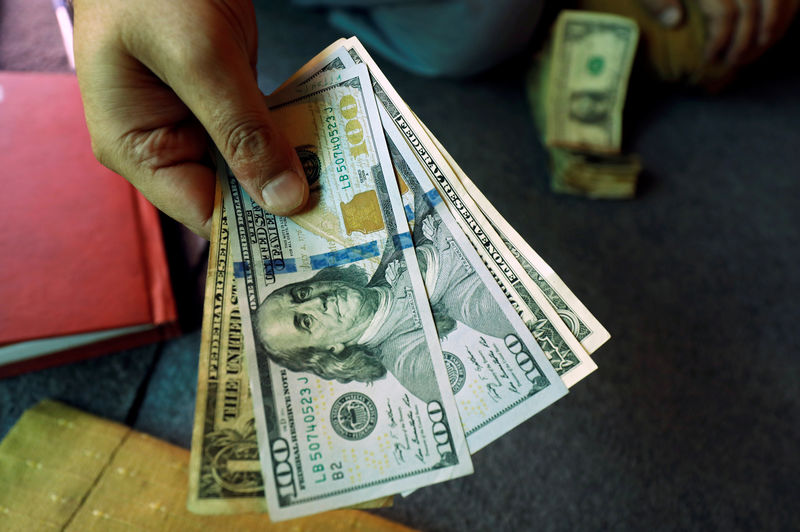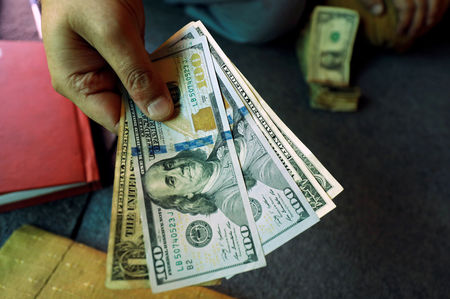 © Reuters.
© Reuters.
By Gina Lee
Investing.com – The dollar was slightly up on Wednesday morning in Asia, trading near a two-month high against the euro as the disparity between the strength of the U.S. and Europe’s pandemic recoveries widened.
The U.S. Dollar Index that tracks the greenback against a basket of other currencies inched up 0.02% to 91.043 by 11:26 PM ET (4:26 AM GMT). The index rose to a two-month high during the previous session.
The USD/JPY pair inched up 0.04% to 105.02, after the USD rose to 105.17 overnight for the first time since Nov. 12.
The AUD/USD pair edged up 0.11% to 0.7614 and the NZD/USD pair was up 0.38% to 0.7218.
The USD/CNY pair inched up 0.07% to 6.4594, after disappointing data was released in China earlier in the day. January’s Caixin services Purchasing Managers Index was 52, against December’s 56.3.
The GBP/USD pair inched up 0.02% to 1.3668.
The disparity was highlighted as the U.S. moves towards passing President Joe Biden’s $1.9 trillion stimulus package, while across the Atlantic lockdowns are extended and expectations of a decline in euro zone growth this quarter grow.
The dollar was little changed at $1.2038 per euro earlier in the session, after it strengthened to $1.20115 overnight for the first time since Dec. 1.
The U.S. currency’s gains also come amid a rally in global shares and improved risk sentiment, in defiance of the usual inverse relationship between the dollar and stocks.
Some investors predict declines for the dollar as the year progresses, however, as the global economy recovers from COVID-19 amid continued fiscal stimulus and ultra-easy monetary policy.
“The relative growth dynamics between Europe, which is weak, and the U.S., which is better, are favoring the USD at the moment, but it remains to be seen if this can be a longer-lasting theme,” National Australia Bank (OTC:NABZY) FX strategist Rodrigo Catril said in a note. He also expects the euro to weaken below $1.20 in the near-term.
A massive round of short-covering, particularly against the yen where hedge funds racked up their biggest short bets against the greenback since October 2016, also gave the dollar a boost.
Although the dollar’s rebound starting form early January is widely seen as a correction to its decline in 2020, other investors said that the new-found firmness could indicate a retreat of the bearish sentiment on the U.S. currency. The dollar index has rebounded 1.2% in 2021 after declining almost 7% in 2020.
“The bear case is facing a short-term stress test … our base case is that without short-term yield support there’s a limit to how far U.S. recovery optimism can boost the USD … global reflation and the Federal Reserve’s determined dovish stance limits upside potential beyond that,” Westpac analysts in a note.
Leave a comment
